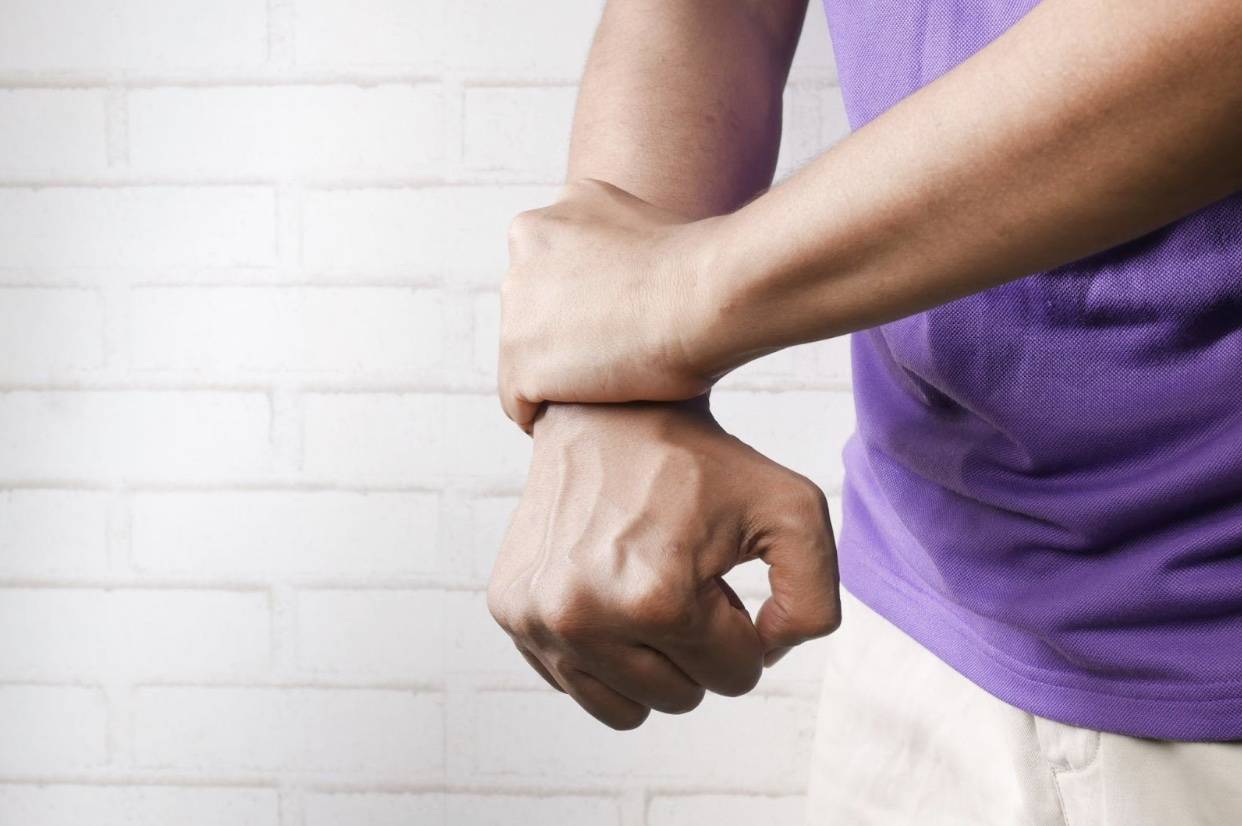No gym membership? No problem! You can find easy ways to exercise on your own without the annual fees.

February 2023. This article is independently written by Shelby Golding. All opinions given are hers. Shelby has been certified as a personal trainer and nutritional specialist since 2007. In 2008, she found her passion for writing about these topics and hasn't looked back.

Did you know that arthritis affects 58.5 million people in the United States? It's a painful autoimmune disorder, and the numbers are rising yearly. And since more than half of people with arthritis are working age, it can seriously get in the way of living your life!
Understanding Arthritis
There are more than 100 types of arthritis, but most people are diagnosed with rheumatoid arthritis, osteoarthritis, gout, or psoriatic arthritis. Without proper treatment, many types of arthritis may lead to bone and joint fusing, fibrous tissue formation, loss of mobility, and even deformity.
Arthritis Symptoms
Arthritis primarily impacts the joints themselves and surrounding tissues. Common symptoms include
- Pain
- Aching
- Stiffness
- Joint swellin
These symptoms can make it painful to do simple tasks like eating, walking, or taking a shower. Some types of arthritis may also interfere with your heart, skin, lungs, or eye health.
Causes of Arthritis
Arthritis is an autoimmune disorder, which means that your body becomes unable to tell healthy cells apart from unhealthy cells. This confusion leads to your body attacking itself as it tries to activate the immune system in response to a false alarm.
Poor diet and a lack of exercise can lead to some types of arthritis – osteoarthritis, for example. And obesity increases the risk of developing most types of arthritis by as much as 60%. Other causes may include family history, previous joint injury, infections, repetitive strain, and smoking tobacco.
Arthritis Prevention

Because obesity and a lack of exercise can increase your risk for almost all types of arthritis, you can implement prevention methods in your lifestyle to reduce your risk. Regular exercise, a healthy diet, and good sleep habits can reduce your risk and, if you already have arthritis, help mitigate your symptoms and pain.
Manage Your Weight
-
Move more: Try to walk, dance, or otherwise move for at least 30 minutes a day and exercise three to five times a week (in addition to 30 minutes of daily movement). Regular activity and exercise help burn calories, improve metabolism, build muscle, and keep your joints healthy. If you already have arthritis, low-impact exercises like swimming and yoga might be a good option.
-
Eat better: Reducing your intake of sugar, processed foods, and fatty meats can help with weight loss. Eating red meat, in particular, increases your risk of arthritis and may make symptoms worse. Research suggests that a vegan diet is an excellent treatment for arthritis. Focus on whole foods, grains, and plant-based proteins. Adding anti-inflammatory foods like olive oil, nuts, seeds, fresh fruits, and fresh veggies (leafy greens in particular) can help, too.
Regular checkups with your doctor can also help with arthritis prevention, allowing you to catch symptoms early. A healthy sleep schedule and mental health care (i.e., talk therapy) can also help reduce your risk.
Treating Arthritis
In addition to regular exercise and a good diet, which can help improve arthritis symptoms, you can take other steps to manage pain. Here are a few options that don't involve over-the-counter or prescription painkillers:
● Kailo Pain Patch: The Kailo patch is designed for medication-free pain management. You simply apply the patch near the site of pain and enjoy a deep sigh of relief. And since you can wear it all day, every day (even when you exercise), it's an excellent option for those with ongoing arthritis pain.
● Massage: Massage helps to reduce stress and improve blood flow to your joints, which can minimize arthritis pain when done regularly. It may also reduce joint swelling, providing further relief for arthritis.
● Meditation: Did you know that meditation can reduce pain? It can rewire your brain and minimize your pain when practiced regularly.
● Acupuncture: Acupuncture treatment has been shown to help with many types of pain, including arthritis pain. While results may vary depending on the provider and patient, it's worth trying if you suffer from chronic pain.
● CBD: Research suggests that CBD oil and ointment may help relieve inflammation and pain.
● Massage: Massage helps to reduce stress and improve blood flow to your joints, which can minimize arthritis pain when done regularly. It may also reduce joint swelling, providing further relief for arthritis.
● Meditation: Did you know that meditation can reduce pain? It can rewire your brain and minimize your pain when practiced regularly.
● Acupuncture: Acupuncture treatment has been shown to help with many types of pain, including arthritis pain. While results may vary depending on the provider and patient, it's worth trying if you suffer from chronic pain.
● CBD: Research suggests that CBD oil and ointment may help relieve inflammation and pain.
Even over-the-counter painkillers are risky, so we recommend trying some of these alternative methods for managing and treating ongoing arthritis pain. For example, you might try a combination of the Kailo pain patch, regular massage (even if you're massaging yourself), and daily meditation to provide relief without the risks.
Don't Let Arthritis Rule Your Life
Preventing and treating arthritis isn't always easy, but this autoimmune disease isn't impossible to manage. You can reduce inflammation, improve your lifestyle, and focus on natural remedies that promote health.
And remember, the Kailo pain patch is here to help! It's designed to provide pain relief in seconds – who can argue with that? In a recent clinical study, participating patients reported a significant decrease in arthritis pain while using Kailo, and 99% of patients felt pain relief within 10 minutes!






